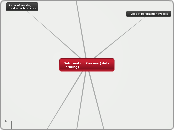realizată de Shivam Naik 14 ani în urmă
1777
Manufacturing Process Project Two - Deformation Process (Metal Forming)

realizată de Shivam Naik 14 ani în urmă
1777

Mai multe ca acesta
Cost
Tooling
Production
Material
Chemical reactivity with tool and work metals
Work material
Hot working or cold working
Type of forming process (rolling, forging, sheet metal drawing, etc.)
Removes heat from the tooling
Reduced sticking, forces, power, tool wear
It reduce harmful effects of friction
Shorter tool life
Work surface oxidation (scale), poorer surface finish
Higher total energy required (due to the thermal energy to heat the workpiece)
Lower dimensional accuracy
No strengthening of part occurs from work hardening
Strength properties of product are generally isotropic
Metals that usually fracture in cold working can be hot formed
Lower forces and power required
Workpart shape can be significantly altered
Need for annealing may be reduced or eliminated
More intricate work geometries possible
Lower forces and power than in cold working
Ductility and strain hardening limit the amount of forming
Surfaces of starting workpiece must be free of scale and dirt
Higher forces and power required in the deformation operation
No heating of work required
Grain flow during deformation can cause desirable directional properties in product
Strain hardening increases strength and hardness
Better surface finish
Better Accuracy and closer tolerance
Plastics
Polymers
Ceramics
Non- Metals
Metal : Ferrous and Non Ferrous
Drafts
Smooth Surfaces
Allowances and fittings
Sharp intersecting points
Accurate dimensions
Internal and external thickness
Length, height, weight,volume and area
Used to form a axially symmetry in a part by spinnig a disc or tube of metal at high speed
A sheetmetal is punched by a ram and drawn to its depths radially
A Punch is used to impart a sheer force on the workpiece against the die, causing to form into a desired shape.
A process of producing V-shape, U- shape and channels by punching a tool on a workpiece [p
Types of Bending
Rotary Bending
Similar to Roll Bending
Roll Bending
Consist of sets of rollers to bend the sheet metal
Coining
The top V- shape ram move along with the workpiece punching it against the die block to form a V- shape.
Bottoming
A sheet metal is punched against the V-shape ram
Air bending
Punching into the workpiece positioned on a desired shaped die block
Types of Process
upset
Drawing
Compresion
Consist of conventional compressive force to form a desirble structure.
Requirments for operation
Imparting load
Hydrostatic
Conventional
Processes to commute
Hydraulic process
Mechanical process
Position of the presss
Vertical Position
Horizontal Position
Movement of extrusions
Hydrostatic extrusion
Consist of a pressurized liquid around the billet allowing it to move through the die
Indirect extrusion
Billet and container moves together through the die causinng extrusing of material
Direct extrusion
Ram or screw is used to push the billet through the die causing extrusion of the material
Can be performed on metals, ceramics, plastics and polymers
Process of thrusting or drawing a material through a die with a predetermind cross -sectional area
Consist of squeezing operation of a metal between open die
Can be performed on both ferrous and non ferrous metals, non metals, Polymers and plastics
Sizing Pressure of a die is determined by the size, type of metal, and dimensional properties
Thermal drilling is a process that uses high friction and high thermal energy to produce bushings in metal tubing and flat stock.
Four steps of PM
Sintering
Compacting
Powder blending
Powder Manufacture
Consist of exertion of compressive force over a powder metal blending it to form a derired strutuerd in a die
Highly used in automative and aerospace industries
A method of die forming which heats a metal tube and exerts internal pressurizing to from a tube in outward and higher elongations of a tube